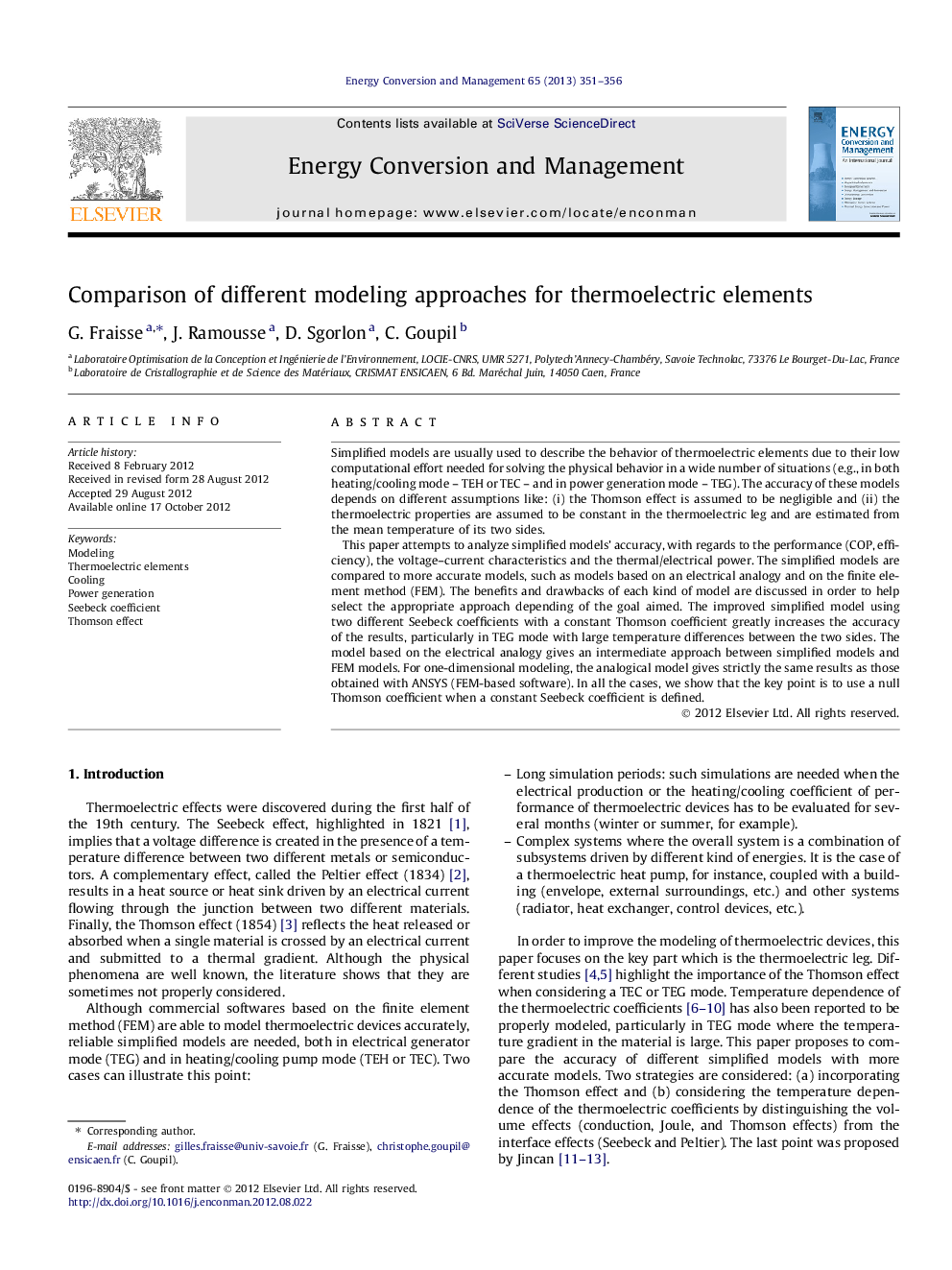| Article ID | Journal | Published Year | Pages | File Type |
|---|---|---|---|---|
| 761024 | Energy Conversion and Management | 2013 | 6 Pages |
Simplified models are usually used to describe the behavior of thermoelectric elements due to their low computational effort needed for solving the physical behavior in a wide number of situations (e.g., in both heating/cooling mode – TEH or TEC – and in power generation mode – TEG). The accuracy of these models depends on different assumptions like: (i) the Thomson effect is assumed to be negligible and (ii) the thermoelectric properties are assumed to be constant in the thermoelectric leg and are estimated from the mean temperature of its two sides.This paper attempts to analyze simplified models’ accuracy, with regards to the performance (COP, efficiency), the voltage–current characteristics and the thermal/electrical power. The simplified models are compared to more accurate models, such as models based on an electrical analogy and on the finite element method (FEM). The benefits and drawbacks of each kind of model are discussed in order to help select the appropriate approach depending of the goal aimed. The improved simplified model using two different Seebeck coefficients with a constant Thomson coefficient greatly increases the accuracy of the results, particularly in TEG mode with large temperature differences between the two sides. The model based on the electrical analogy gives an intermediate approach between simplified models and FEM models. For one-dimensional modeling, the analogical model gives strictly the same results as those obtained with ANSYS (FEM-based software). In all the cases, we show that the key point is to use a null Thomson coefficient when a constant Seebeck coefficient is defined.
► Simplified models and details models are presented and compared. ► The Thomson effect must not be used when the Seebeck coefficient is constant. ► The improved simplified model presents good accuracy in TEC and TEG. ► Standard simplified model presents good accuracy in TEC/TEH. ► Analogy model gives the same results as the reference model (TEC and TEG).
